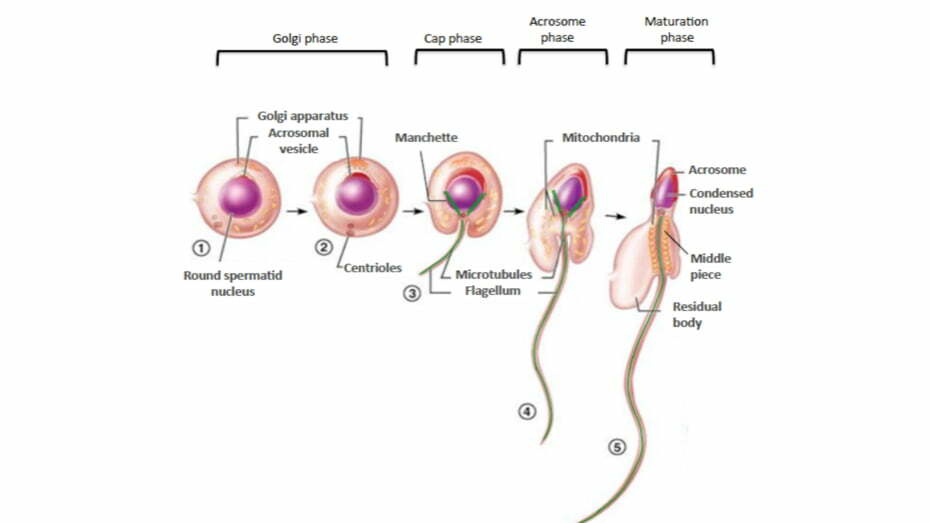Azoospermia and Rosi Technique
Azoospermia is a condition in which there are no sperm cells in the semen in men.
Azoosperm, one of the most important causes of infertility in men, is a health problem that concerns approximately 10% of couples who seek treatment to have children. With the right treatment schemes, there are many families who have azoospermia and have children.
How Many Types of Azoospermia Are There?
In general, there are 2 types of azoospermia. These are;
- Azoospermia Due to Obstruction (Obstructive Azoospermia)
- Nonobstructive Azoospermia
Causes of Azoospermia
Although the causes of azoospermia are usually hormonal problems, there are 6 different causes of azoospermia. These are;
- Hormonal Causes
- Hypogonadotropic Hypogonadism (Hypo Hypo)
- Genetic Problems
- Klinefelter Syndrome
- Azf Deletions
- Azoospermia of unknown cause
MicroTESE procedure without hormonal treatment for sufficient time will adversely affect the treatment in these patients. This is the patient group with the highest chance of success of hormonal therapy in male infertility. After hormonal treatment in sufficient time and dose, sperm output can be achieved in a significant part of these patients.
In patients who cannot provide sperm output, the probability of sperm being found in microTESE procedures to be performed after treatment is also very high. While spontaneous pregnancy occurs in some of the patients with outgoing sperm, the number of sperm in a significant part of them is not sufficient for normal pregnancy, so IVF treatment is used to have a child. However, the man will not need to undergo microTESE. Azoosperm is a condition that should not be overlooked in the hormonal examination of patients.
Genetic Problems
GENETIC PROBLEMS occur in approximately 10% of couples seeking treatment for infertility. Genetic problems in azoosperm patients are not problems that have a cure and can be eliminated with medication. The genetic structures formed from the mother’s womb cannot be changed. In our time, it is possible to have a child with the treatments to be performed on some of the genetic problems that have not had the chance to be treated before and with the sperms to be obtained by the microTESE process. Azoosperm patients must be examined genetically. Genetic examinations that need to be done; KARYOTIP ANALYSIS and micro Y DELETION test.
Klinefelter Syndrome
Klinefelter syndrome is the most common condition we see in azoospermia patients with genetic problems. This condition, which is seen in one in every thousand births in the general population, is frequently encountered among those with azoospermia. People who need to carry 46 chromosomes have more than 1 chromosome, and in this case, there is a genetic structure of 47 XXY. It is difficult to diagnose this condition in people who do not want to have children. In these people whose hormonal structures are not normal, approaches to bring testosterone levels to normal levels are useful in the preparation periods before treatment.
It is now possible for these couples, who were not able to have children before, to have children after micro-injections with sperm cells to be found in microTESE procedures. With the genetic examinations to be performed before the embryo transfer, it can be ensured that the embryo to be given is genetically normal. This group of patients needs regular endocrine follow-up in order to maintain their hormonal balances normally, except for the process in which they want to have children.
Azf Deletions
Azf Deletions are one of the genetic causes of azoosperm conditions. In men, the genetic regions responsible for sperm production are located on the Y chromosome. Clinically important areas; AZF a, AZF b, AZF c are the areas. In cases where there is loss (deletion) in these areas, azoospermia occurs. While it is possible to find sperm with microTESE procedure in AZF c area losses, studies show that there is no chance of finding sperm with microTESE procedure when complete loss is present in AZFa and AZFb areas. Sperm can be found in partial losses in these areas. In the case of AZFc area losses, sperm may come out from time to time, in these cases, the sperm should be frozen and stored because the probability of developing azosperm over time is very high.
Azoospermia of Unclear Cause
Although it is the most common group among all azoospermia, our treatment method will not change in cases where other examinations (hormones and genetics) are normal. Patients who cannot be placed in a certain class after hormonal and genetic examinations are evaluated in this group.
Azoospermia Treatment
Although azoospermia treatment is in the form of treatment of the causes that can be found, testicular sperm retrieval methods (PESA, TESA, MESA, micro TESE) applied in patients who do not have spontaneous sperm output at the end of the treatment are the most important part of the treatment.
The microTESE procedure, known as azoospermia surgery, is the most important procedure of azoospermia, which is still not due to obstruction (nonobstructive azoospermia). Sperm cells obtained by azoosperm surgery (micro-TESE) are used in the microinjection process.
How is azoospermia surgery performed? Does it give the same result in every center? Their questions are the most curious topics of our patients before the procedure. Micro TESE surgery is performed under a microscope, with optical magnification and it is important that it is performed in experienced hands. MicroTESE procedure can be performed under anesthesia or with local anesthesia for patient comfort.
Before the procedure, the uneasiness of the patients about how to perform azoosperm surgery should be eliminated. The procedure should be explained to the couples in detail, and it should be shared that there is a possibility of failure as well as the chance of success, that is, the absence of sperm.
Those who have azoospermia surgery are rested in clinics for a few hours after the operation and then the necessary antibiotic and painkiller treatments are planned and sent home. The recommendation of about a week of rest is usually sufficient for patients to relax. Those who have azoosperm surgery should be informed about undesirable conditions (bleeding in the testicles, swelling, infection) and should be warned to apply to the center where they have surgery immediately when they encounter these. You can contact our clinic in Ankara, Çankaya for azoospermia treatment.
Hormonal Therapy
Although hormonal therapy is frequently performed in azoospermia patients, there is no consensus in the world about the doses and duration of these treatments except for HIPPO patients. Hormonal approaches to treat possible low testosterone before microTESE in Klinefelter patients may increase the success of microTESE.
Although applied intensively, scientific data on how much hormone values increase the success of microTESE are variable. Today, scientific data suggest that correctly selected hormonal therapies are beneficial in azoospermia patients. However, it is important that the treatments to be used are selected according to the age, body characteristics, genetic structures, sperm tests and hormonal status of the patients and that they are closely followed.
Herbal Treatment
Although herbal treatments are frequently used in azoosperm patients, unfortunately they are often used outside the control and recommendation of the doctor. Although this treatment group, which is underestimated as herbal treatment, gives useful results in the treatment of azoosperm when planned correctly, it affects hormone levels badly when used without pre-preparation, control and without a doctor’s recommendation, and may irreversibly impair liver and kidney functions from time to time.
Although these treatments are not completely excluded in general infertility and azoosperm treatments, they should be started under the control of a doctor after medical examinations. It should not be forgotten that excessive prolongation of the treatments to be performed may cause toxic effects on the person of the right treatments. This leg of treatment should be planned as a support to other scientifically proven treatments instead of being used alone.
Vitamins
Vitamins are frequently used agents in male infertility. Infertile men are confronted with a large number of options in this area and the choice, unfortunately, is made only according to advertising. Although there are examples of necessary controls and inspections produced under safe conditions in our country in this treatment way, which causes serious costs, we often encounter products whose origin and content are not clear. For this reason, this treatment group must be used with the recommendation and control of the doctor. In this treatment group, where treatment costs have reached considerable values, the vitamins to be used should be selected by the doctor according to the person.
Medication
The medication in azoospermia should be planned by the doctors individually. HCG, HMG, FSH are hormonal medications that can be used in different treatment protocols. Tamoxifen, clomiphene citrate, letrozole are medications used in the treatment of this issue and taken orally. Femara is a member of a group used for azoospermia, which we call aromatase inhibitor and contains letrozole. Just like tamoxifen and clomiphene citrate (clomid), it has an antiestrogen effect. In other words, by reducing estrogen, which is the female hormone, it turns the estrogen / testosterone balance in the male body in favor of testosterone.
What are Azoospermia Treatment Prices?
The cost of azoospermia treatment is a subject that is generally wondered and researched. However, in the case of azoospermia, which occurs due to a wide variety of reasons, the wide variety of treatments to be planned makes it impossible to talk about exact prices.
The medications that may be recommended to our patients who will be ultimately microTESED for use in advance may impose certain burdens on the patients as a fee and the planned cost calculations for the patients vary. The correct approach is to evaluate each couple separately and develop a treatment plan. In the presence of scientific data, the shortest and most accurate treatment should be planned.
You can contact our clinic in Ankara for detailed information and prices about the treatment.

